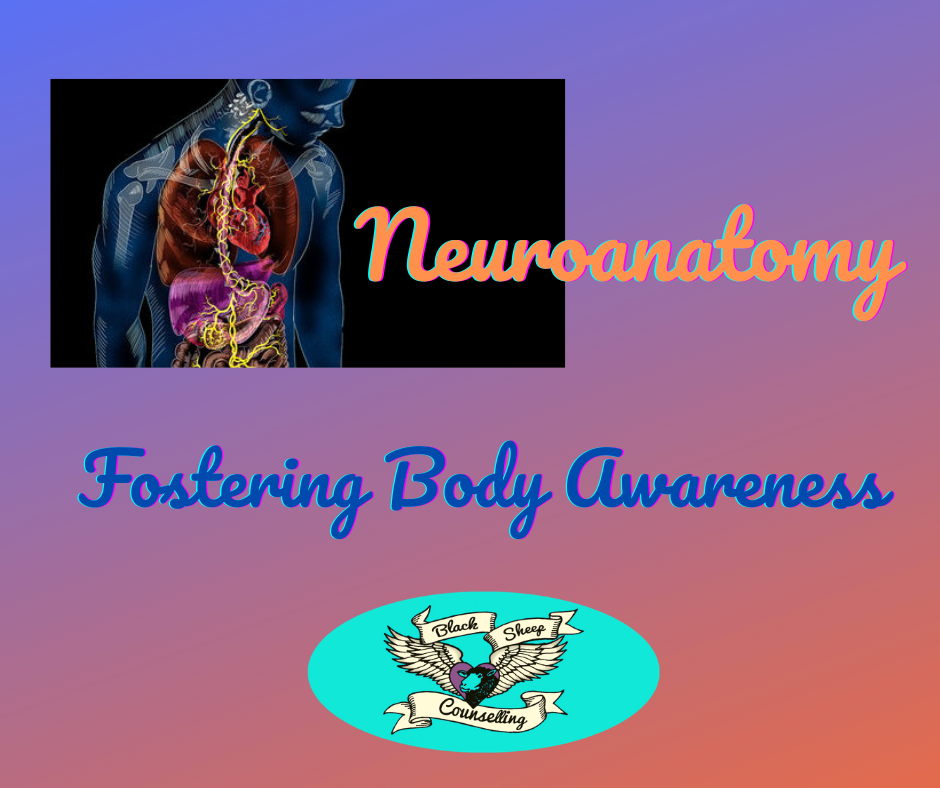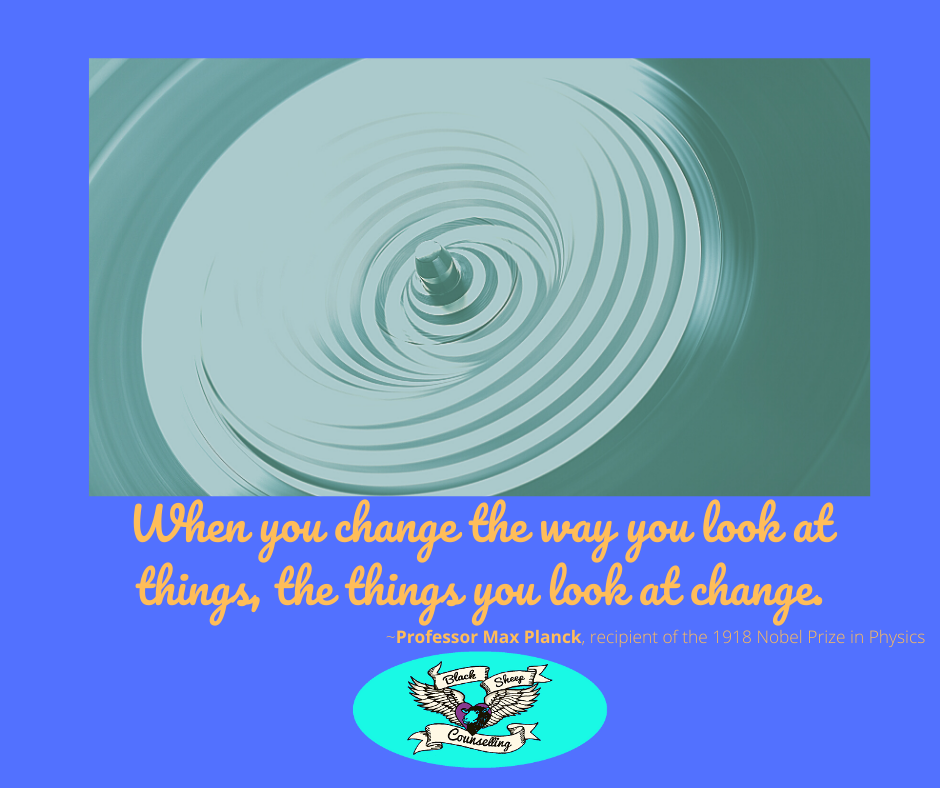Neuroanatomy

Many people trying to heal from trauma are incredibly hard on themselves regarding their suffering. Contrary to popular belief, trauma responses are neither cognitive or emotional responses (we cannot *think* ourselves out of our trauma reactivity).
Trauma resides in our bodies*.
Our bodies possess a knowingness that alerts us to what is safe and what is dangerous. Advances in neuroscience through the Polyvagal Theory have illuminated that our deepest emotions – anger, fear, dread, grief, sorrow, disgust, love, and hope – involve the activation of our body system known as the vagus nerve**. The vagus nerve involves a complex system of nerves that connect the brainstem, pharynx, heart, lungs, gut, stomach, and spine. The wisdom of the vagus nerve system does not use the part of the brain responsible for executive functioning (using cognition or reasoning) to make sense of the world. The vagus nerve is connected to the part of the brain responsible for automatic responses; what is commonly referred to as the “lizard” or “reptilian” brain (the subcortical brain). All our sensory input passes through the reptilian brain before it reaches the neocortex (where we think and reason). Our lizard brains scan for danger and responds instantaneously – either by allowing access to the neocortex or rejecting it and inciting an animal defense response (fight, flight, freeze, submit).
Trauma responses are never reasonable. They are reflexive and protective.
Our lizard brains do not think. They are reflexive, protective as a mama bear to her baby cub, and mother-f#*%ing strong. If the lizard brain detects danger (real or perceived), it impedes connection to our thinking brain and an animal defense response kicks in. Think of how quickly you may have averted danger. Perhaps it was swerving your vehicle to avoid an accident or moving out of the way to avoid being struck by something or someone. Maybe you instinctively shielded another from impending danger. We often refer to these responses as “knee-jerk” reactions. Events like these do not involve the thinking brain whatsoever – they are automatic responses that focus only on discerning one thing: is this dangerous or safe?
“Danger” is not just physical harm. Perceived danger is anything that poses a threat to what we value and believe, what we say or do, what or who we care about, and what we aspire to be. Think of how people behave if they sense their religious or political beliefs are threatened (many events come to mind, such as the recent storming of the US Capitol January 6, 2021 – for many, the thinking brain was not being accessed and people were acting without thinking of the long-term detrimental and legal consequences of their actions; some people that day were genuinely acting out of a perceived sense of threat).
Embracing curiosity and learning about our neuroanatomy can bring us relief and foster empowerment. Take for example, what we call depression. Depression is the cluster of emotional and cognitive symptoms that sits on top of a physiological platform in the immobilization threat response. The intent of this response is to help us survive – it is trying to save us. When we can view depression as something that is fundamentally trying to be helpful, we start to change our relationship to it. Embracing depression as an active defense strategy helps us move away from the more common felt sense of hopelessness.

*For more on this, see the reference list
** Stuff worth knowing about the VAGUS NERVE:
-the vagus nerve was historically cited as the pneumogastic nerve
-the name “vagus” is derived from the Latin meaning “wandering” because it wanders sending out sensory fibers from the brain stem through organs in the neck, throat, and abdomen
-the vagus nerve is also referred to as the “soul nerve”
-the vague nerve is activated in a felt sense of belonging
-the vagus nerve is the unifying organ of your entire nervous system, reaching your throat, lungs, heart, stomach, liver, spleen, kidney, pancreas, and gut
-the vagus nerve is intimately involved with how your body interacts with other bodies
-the vagus nerve is where you experience a felt sense of love, compassion, empathy, caring, dread, fear, grief, loneliness, sadness, despair, anxiety, disgust, and other things that we share as part of our common humanity
and most importantly:
-by embracing curiosity, mindfulness, somatic practices, and patience (!), you can learn to work with your vagus nerve to better soothe yourself in times of stress and learn to activate & mobilize your body on demand
~Christine
References:
Briere, J. M., & Scott, C. (2015). Principles of trauma therapy: A guide to symptoms, evaluation, and treatment (2nd ed.). Thousand Oaks, CA: Sage.
Dube. S. R., Fairweather, D., Pearson, W. S., Felitti, V. J., Anda, R. F., & Croft, J. B. (2009). Cumulative childhood stress and autoimmune diseases in adults. Psychosomatic Medicine, 71, 243-250. doi: 10.1097/PSY.0b013e3181907888
Fosha, D. (2007). The transformative power of affect: A model for accelerated change. New York, NY: Basic Books.
Herman, J. (1992). Trauma and recovery: The aftermath of violence – from domestic abuse to political terror. New York, NY: Basic Books.
Mate, G. (2011). When the body says no: Understanding the stress-disease connection. Hoboken, NJ: John Wiley & Sons, Inc.
Menakem, R. (2017). My grandmother’s hands: Racialized trauma and the pathway to mending our hearts and bodies. Central Recovery Press, Las Vagas, NV.
Ogden, P., & Fisher, J. (2015). Sensorimotor psychotherapy: Interventions for trauma and attachment. New York, NY: W. W. Norton & Company, Inc.
Porges, S. W. (2017). The pocket guide to polyvagal theory: The transformative power of feeling safe (1st ed.). New York, NY: W. W. Norton & Company, Inc.
van der Kolk, B. A. (2014). The body keeps the score: Brain, mind, and body in the healing of trauma. New York, NY: Penguin Books.
van der Kolk, B. A., & Fisler, R. E. (1994). Childhood abuse and neglect and the loss of self-regulation. Bulletin of the Menninger Clinic, 58(2), 145-168.
